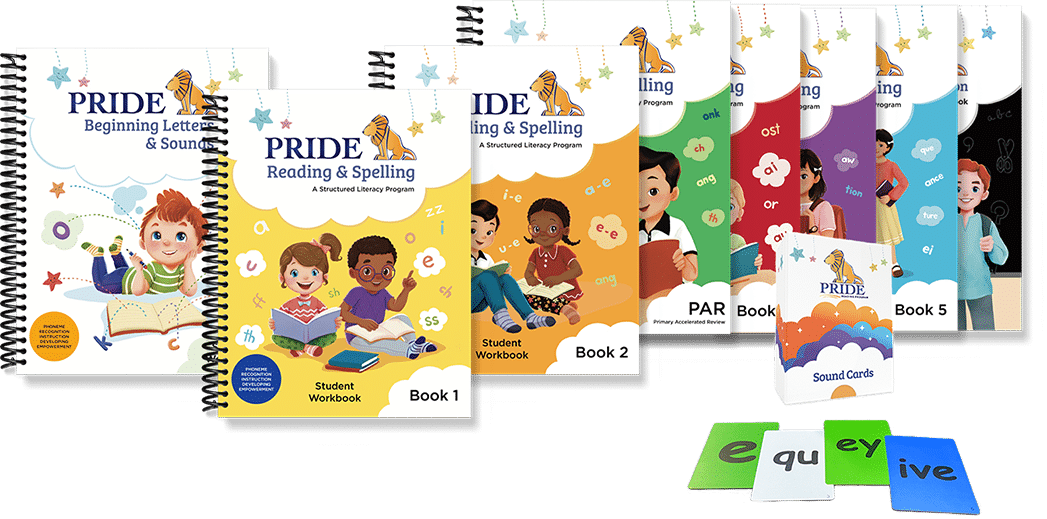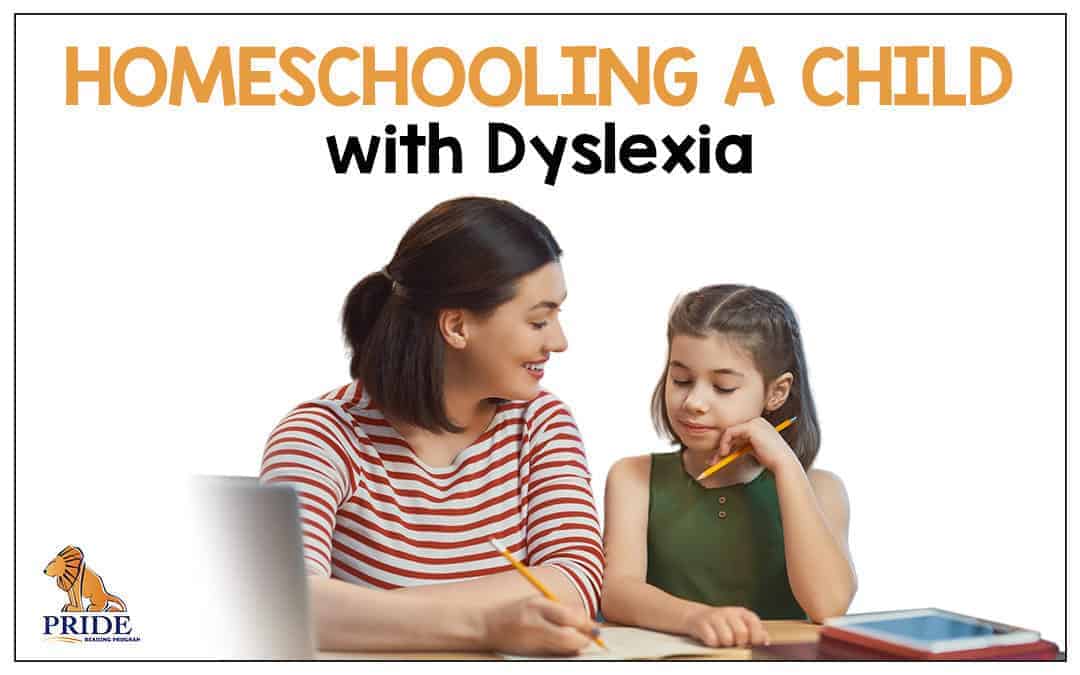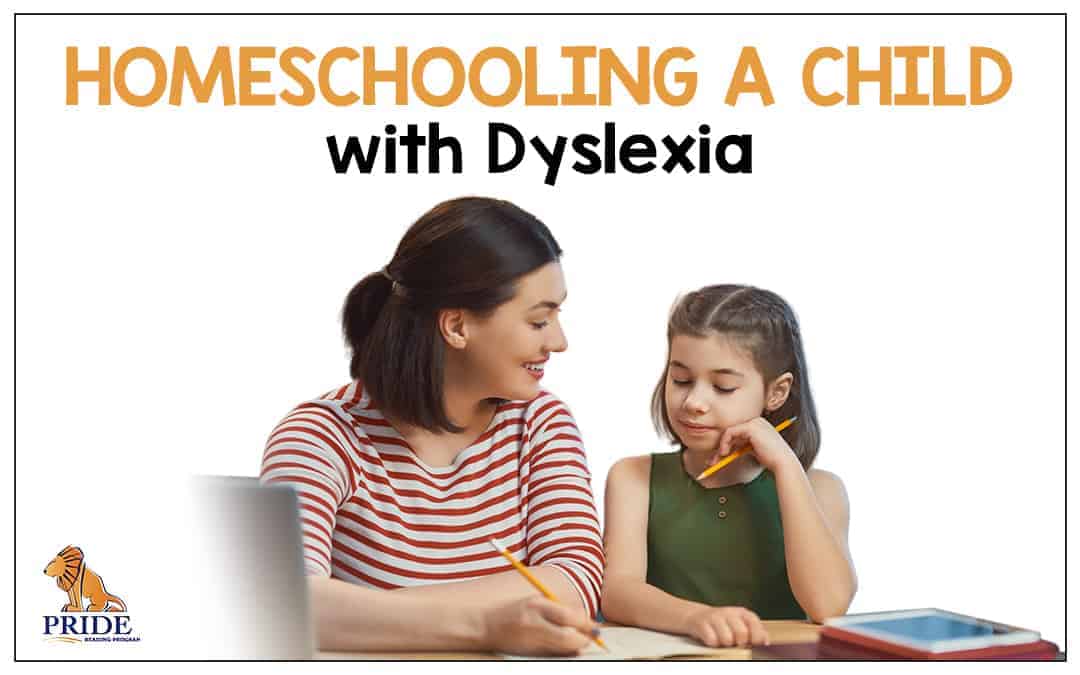Homeschooling has become very popular in the last few years and both parents and students are finding the homeschooling experience advantageous. More and more parents are shifting to home learning wanting their children to receive an education different from that being offered in the public school districts. Children with dyslexia require direct, systematic, and individual instruction that traditional schools do not always provide. If you are exploring the option of homeschooling your child with dyslexia, here are some of the things to know…
What is the Best Homeschool Program for Dyslexia?
While there are many great reading and phonics programs in the homeschool market, most of these are not geared toward children with dyslexia. Children with dyslexia need a very specialized program in reading and spelling that will specifically address their needs. Children with dyslexia need to be taught differently. Here are the best methods and approaches that these children need.
Orton-Gillingham
The best choice when homeschooling with dyslexia is to use an Orton-Gillingham reading curriculum. Orton-Gillingham is a structured, step-by-step, repetitive, and multisensory approach. This approach is specifically designed to help struggling readers learn the connections between letters and sounds. Reading and spelling are broken down into smaller skills. Over time the student builds on these skills using sight, hearing, touch, and movement.
Structured Literacy
Structured Literacy is an umbrella term coined by the International Dyslexia Association in 2016. The term Structured Literacy refers to reading programs for dyslexia such as the Orton-Gillingham approach. Structured Literacy follows the evidence and research behind the Science of Reading and is recommended for children with dyslexia and those who are having difficulties with decoding because it addresses phonological skills, decoding, and spelling.
The Science of Reading
The Science of Reading is a term that refers to research that has been conducted over the past twenty years by leading reading experts, cognitive scientists, and reading researchers on how we learn to read.
According to the International Dyslexia Association, Guided Reading or Balanced Literacy, are not effective reading programs for struggling readers. These approaches are especially ineffective for students with Dyslexia because they do not focus on the decoding skills these students need to succeed in reading.
Students with dyslexia will need a reading program that is aligned with the Science of Reading.
Multisensory
Students with dyslexia will need a multisensory reading and spelling program. Multisensory means hearing it, saying it, touching it, and moving with it during every lesson.
When a child engages the body with the brain, it creates a memorable experience and helps the concept stick long-term. The more senses a child uses, the stronger this memory will be. Here are a few multisensory teaching examples that can be used during home learning:
- Have the child write words with a squeeze-style ketchup bottle, shaving cream, or chocolate pudding (ooh messy fun).
- Use trays filled with salt or sand and have the child write letters or words in these.
- Build words with wooden letters, blocks, legos, or puzzle pieces.
- Have the child write on their palm, use arm tapping, or you can have the child spell words while at the same time doing a jumping jack or bouncing a ball.
- Take a walk in the neighborhood and read the world. There are letters and signs everywhere.
- Go to the grocery store and read the entire store.
- When teaching specific reading and spelling skills, use letter tiles, flashcards, games, and manipulatives.
What Does A Lesson Look Like
When Homeschooling with Dyslexia?
Children with dyslexia need explicit and direct instruction. They will need a reading and spelling program that is structured, systematic, cumulative, and repetitive. Here is an example of what an Orton-Gillingham lesson looks like:
Example: You are teaching the short vowel a.
- The child will see a picture of an apple and the child will say “/a/, apple.”
- The child will write the a in the air 3 times while saying it aloud.
- The child will practice at least 3 phonemic activities with the a.
- The child will arm tap, palm write, and write the a in shaving cream, sand, etc.
- The child will write words with the a that you dictate to them (cat, man, nap, etc.).
- The child will read a list of words with a and underline the a as they read.
- The child will read sentences with the a.
- The child will read an entire decodable text highlighting the a.
- Finally, the child will read a decodable book practicing the a.
After this explicit instruction in a, the child will have mastered the concept of a. When the child continues onward to the next concept in Orton-Gillingham (which is the i ), the child will continue to repeat and review the a.
Here is an example of a lesson using an Orton-Gillingham, multisensory approach. Watch this video:
Homeschooling With Dyslexia Resources
Thank you for reading this post today. You might also enjoy reading:
How Children Learn to Read: A Guide for Parents and Teachers
Unlocking Learning Success: Why PRIDE Reading Program is the Perfect Fit for New Homeschoolers
Please don’t leave without checking out the PRIDE Reading Program Program. The PRIDE Reading Program is an Orton-Gillingham homeschool curriculum that is used by teachers, tutors, and homeschooling parents worldwide with great success.


Karina Richland, M.A., is the author of the PRIDE Reading Program, a multisensory Orton-Gillingham reading, writing, and comprehension curriculum that is available worldwide for parents, tutors, teachers, and homeschoolers of struggling readers. Karina has an extensive background in working with students of all ages and various learning modalities. She has spent many years researching learning differences and differentiated teaching practices. You can reach her by email at info@pridereadingprogram.com or visit the website at www.pridereadingprogram.com



Homeschooling my dyslexic child with the Pride reading program has made such a huge difference in her confidence and ability to read.
Thanks for the great feedback 🙂